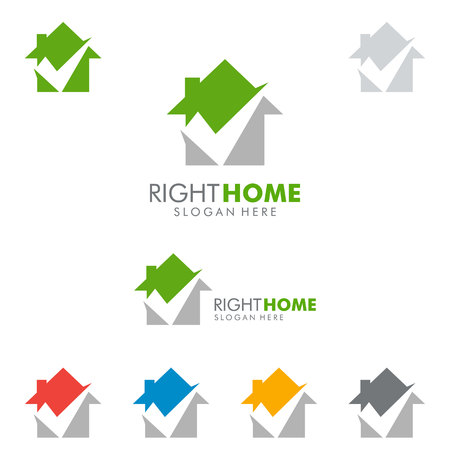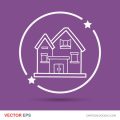1. Understanding Cash Flow in Real Estate Investment
When it comes to real estate investing, one of the most important concepts to grasp is cash flow. In simple terms, cash flow is the money left over each month after you’ve paid all the expenses related to owning and managing a rental property. This includes mortgage payments, property taxes, insurance, maintenance costs, and property management fees. If you’re earning more from rent than you’re spending on these expenses, you have positive cash flow—something every real estate investor wants.
Why Cash Flow Matters
Cash flow isn’t just about putting money in your pocket each month—it’s also a key indicator of whether or not an investment property is financially healthy. Strong and steady cash flow can help minimize risk by providing a buffer against unexpected repairs, vacancies, or market fluctuations. It also gives investors more control and flexibility, especially during economic downturns.
Basic Cash Flow Formula
To better understand how cash flow works, here’s a simple formula:
| Income | – Expenses | = Cash Flow |
|---|---|---|
| Total Rental Income | Total Operating Costs + Mortgage Payments | Net Monthly Cash Flow |
Example:
| Description | Amount (Monthly) |
|---|---|
| Rental Income | $2,000 |
| Mortgage Payment | $1,000 |
| Property Taxes & Insurance | $300 |
| Maintenance & Management | $200 |
| Total Expenses | $1,500 |
| Net Cash Flow | $500 |
This example shows a positive monthly cash flow of $500. That means after all bills are paid, the investor pockets $500 every month. This not only adds to the investors income but also acts as a cushion if unexpected costs come up.
The Foundation for Smart Investment Decisions
Before buying any rental property, analyzing projected cash flow helps determine whether the investment makes financial sense. A property with negative or tight cash flow could lead to financial strain down the road. On the other hand, consistent positive cash flow supports long-term wealth building and lowers overall investment risk.
In short, understanding how cash flows in and out of your real estate investments is essential. It provides clarity on your financial position and allows you to make informed decisions that protect your money and grow your portfolio over time.
2. Key Components of a Cash Flow Analysis
Understanding the cash flow of an investment property is essential for minimizing financial risk. A detailed cash flow analysis helps investors see whether a property will generate positive income over time. Let’s break down the key components that go into this process.
Rental Income
This is the total amount of money you expect to receive from tenants on a monthly or yearly basis. It includes base rent and may also include additional income from things like parking fees, laundry machines, or storage rentals. Accurately estimating rental income is the first step in projecting how much money your property can bring in.
Example Rental Income Table
| Unit Type | Monthly Rent | Number of Units | Total Monthly Income |
|---|---|---|---|
| 1-Bedroom | $1,200 | 4 | $4,800 |
| 2-Bedroom | $1,500 | 3 | $4,500 |
| Total | $9,300 |
Operating Expenses
These are the costs required to run and maintain the property. Operating expenses typically include:
- Property taxes
- Insurance premiums
- Maintenance and repairs
- Utilities (if paid by landlord)
- Property management fees (if applicable)
- HOA fees (if any)
Example Operating Expenses Table (Annual)
| Expense Category | Estimated Annual Cost |
|---|---|
| Property Taxes | $6,000 |
| Insurance | $1,800 |
| Maintenance & Repairs | $2,500 |
| Utilities | $1,200 |
| Management Fees | $2,000 |
| Total Expenses | $13,500 |
Vacancy Rates
No property stays fully occupied all year long. Vacancy rate accounts for the percentage of time units may be empty and not generating income. A conservative estimate usually ranges from 5% to 10%, depending on the local rental market.
How to Estimate Vacancy Loss:
If your annual rental income is $111,600 and you estimate a 5% vacancy rate, expected vacancy loss would be:
$111,600 × 5% = $5,580 annual vacancy loss.
Financing Costs (Debt Service)
If you’re using a mortgage to finance the property, monthly loan payments are part of your ongoing costs. These include both principal and interest payments. Understanding your debt service helps determine if your rental income will cover both operating expenses and financing costs.
Sample Mortgage Payment Details:
| Description | Amount (Monthly) |
|---|---|
| Loan Amount | $300,000 |
| Interest Rate (Fixed) | 6% |
| Term Length (Years) | 30 years |
| Monthly Mortgage Payment (P&I) | $1,798.65* |
| *Calculated using standard mortgage formula. |
Total Cash Flow Calculation Example:
| Description | Amount (Annual) |
|---|---|
| Total Rental Income | $111,600 |
| (- ) Vacancy Loss (5%) | – $5,580 |
| (- ) Operating Expenses | – $13,500 |
| (- ) Mortgage Payments | – $21,583.80 |
| = Estimated Net Cash Flow | $70,936.20 |
This simple breakdown gives investors a clear picture of their potential earnings—and risks—before making a purchase decision. By carefully analyzing each component of cash flow, investors can better predict profitability and make smarter investment choices.

3. How Cash Flow Influences Investment Decision-Making
When it comes to real estate investing, cash flow is one of the most important factors that can make or break a deal. Simply put, cash flow is the money left over after all expenses are paid—like mortgage payments, property taxes, insurance, maintenance, and management fees. Understanding whether a property generates positive or negative cash flow helps investors make smarter decisions and reduce risk.
Positive vs. Negative Cash Flow
A property with positive cash flow means that the rental income exceeds operating costs. This not only provides monthly income but also acts as a buffer against unexpected expenses or market downturns. On the flip side, negative cash flow occurs when the expenses outweigh the income, which can quickly drain an investor’s resources and increase financial stress.
| Type of Cash Flow | Description | Impact on Investor Strategy |
|---|---|---|
| Positive Cash Flow | The propertys income is higher than its expenses | – Encourages long-term holding – Provides passive income – Easier financing for future deals |
| Negative Cash Flow | The propertys expenses are higher than its income | – Requires additional funding – Higher financial risk – Often used in appreciation-focused strategies |
The Role of Cash Flow in Property Valuation
An investor doesn’t just look at how much a property costs—they evaluate how much it can earn. Properties with strong, consistent cash flow often have higher market value because they offer reliable returns. Many investors use metrics like the Capitalization Rate (Cap Rate) or Cash-on-Cash Return to determine if a property is worth the investment.
Example:
If two similar properties are priced at $300,000, but one generates $600/month in net cash flow while the other breaks even, most experienced investors will prefer the first one—even if both are in great neighborhoods. Why? Because the extra income provides more stability and less reliance on market appreciation.
Catering to Different Investor Strategies
Certain investors focus on steady monthly income (cash flow investors), while others aim for long-term gains through appreciation (growth investors). Positive cash flow properties tend to attract those looking for immediate returns and reduced risk. Meanwhile, some may accept short-term negative cash flow if they believe the propertys value will significantly increase over time.
Key Takeaway:
No matter your strategy, understanding how cash flows in and out of a property gives you better control over your investment decisions—and helps you avoid surprises down the road.
4. Mitigating Risk Through Accurate Forecasting
One of the most effective ways to reduce investment risk in real estate is through accurate and realistic cash flow forecasting. When done right, this process helps investors identify potential problems before they become costly issues. Lets break down how this works in a simple and practical way.
Why Accurate Forecasting Matters
Cash flow forecasting involves estimating all the income and expenses associated with a property over time. This includes rent, vacancies, maintenance costs, property taxes, insurance, and more. By creating a detailed projection, investors can better understand if the property will generate positive cash flow or if it might drain resources.
Spotting Red Flags Early
Realistic projections help you identify risks such as:
- Overestimated rental income: Assuming higher rent than the market supports can lead to negative cash flow.
- Underestimated expenses: Forgetting to include repair costs or rising utility rates can throw off your budget.
- Vacancy rates: Ignoring local vacancy trends may result in lower-than-expected revenue.
Catching these early allows you to adjust your investment strategy or walk away from a deal that doesn’t meet your financial goals.
Example: Forecasting for a Rental Property
The table below shows a simplified cash flow forecast for a single-family rental home:
| Item | Monthly Estimate |
|---|---|
| Rental Income | $2,000 |
| – Vacancy Allowance (5%) | – $100 |
| – Property Management Fees (10%) | – $200 |
| – Maintenance & Repairs | – $150 |
| – Property Taxes | – $250 |
| – Insurance | – $100 |
| Net Monthly Cash Flow | $1,200 |
This kind of projection gives you a clearer picture of what to expect financially and helps you prepare for possible shortfalls.
The Power of Being Proactive
A well-prepared investor uses forecasting not just as a planning tool but as an early warning system. If your forecast shows tight margins or potential losses, it’s a signal to renegotiate the purchase price, find ways to increase revenue, or explore different properties altogether. In the long run, this proactive approach reduces surprises and builds confidence in your investment decisions.
Your Next Step
If youre considering an investment property, start with a realistic cash flow analysis. Use conservative estimates and double-check your numbers. The more accurate your forecast, the better equipped youll be to minimize risk and make smarter choices.
5. Tools and Best Practices for Cash Flow Analysis
To minimize investment risk in U.S. real estate, understanding and managing cash flow is key. Successful investors rely on a mix of tools, software, and proven methods to get an accurate picture of their propertys financial performance. Heres a breakdown of what many U.S. investors use to analyze cash flow effectively.
Popular Software Tools Used by Real Estate Investors
Technology plays a big role in simplifying cash flow analysis. Below is a table highlighting some widely-used software among American real estate investors:
| Software | Main Features | Best For |
|---|---|---|
| Stessa | Tracks income, expenses, and property performance; generates reports automatically | Small to mid-size landlords and portfolio investors |
| BiggerPockets Rental Property Calculator | User-friendly tool for estimating monthly cash flow and ROI | Beginner and intermediate investors |
| QuickBooks | Doubles as accounting software with customization for rental properties | Larger portfolios or investors working with accountants |
| Buildium | Covers full property management including rent collection and financial reporting | Property managers and multi-unit owners |
| AIRDNA (for Short-Term Rentals) | Anaylzes Airbnb data to project short-term rental income potential | Savvy vacation rental investors |
Tried-and-True Methodologies for Analyzing Cash Flow
Apart from digital tools, here are some core practices used by U.S. investors when assessing cash flow:
The 50% Rule
This rule-of-thumb suggests that about 50% of your rental income will go toward operating expenses (not including mortgage payments). Its a quick way to estimate net operating income (NOI).
The 1% Rule
If the monthly rent is at least 1% of the purchase price, the property may offer solid cash flow. For example, if you buy a home for $200,000, look for at least $2,000/month in rent.
The Cap Rate Formula
(Net Operating Income ÷ Property Price) × 100 = Capitalization Rate (Cap Rate)
This helps compare different investments quickly by showing return as a percentage.
Sensitivity Analysis
This method involves adjusting key numbers like vacancy rates or repair costs to see how changes affect your bottom line—helping you prepare for worst-case scenarios.
Create Your Own Spreadsheet Model (DIY Approach)
If youre comfortable with Excel or Google Sheets, building your own model can give you more control over how you calculate cash flow. A basic spreadsheet should include:
- Total Rental Income: Expected monthly rent × number of units/months rented out annually.
- Total Expenses: Include taxes, insurance, maintenance, utilities (if landlord-paid), vacancy allowance.
- NoI: Total income – total expenses.
- Cash Flow: NoI – debt service (mortgage principal + interest).
- Cushion Factor: An emergency buffer or reserve fund for unexpected costs.
The Importance of Consistency and Updates
No matter which tools or strategies you use, the best practice is consistency. Update your numbers regularly—monthly or quarterly—to track trends and spot issues early. Also, stay informed on market changes like tax law shifts or rising insurance premiums that can impact your cash flow projection.
A Final Note on Practice Over Perfection
You don’t need to be a finance pro to run effective cash flow analysis. Start simple, pick tools that suit your comfort level, and refine your approach as you gain experience. The goal is to have clear visibility into how much money your investment makes—and how much risk it carries.
6. Case Studies: Real-World Examples of Risk Reduction
Understanding how cash flow analysis works in the real world can make a big difference when it comes to making smart investment choices. Let’s look at a few examples where investors used solid cash flow analysis to avoid bad deals or improve their returns.
Example 1: Avoiding a Negative Cash Flow Rental
John, an investor from Texas, was considering buying a single-family rental home priced at $300,000. The neighborhood looked promising and the property seemed like a great deal. However, after doing a detailed cash flow analysis, John discovered the monthly rent would only be about $1,800 while his expenses—including mortgage, taxes, insurance, and maintenance—would total around $2,100.
This meant he’d be losing $300 every month. Thanks to the analysis, he walked away from the deal before committing to a money-losing investment.
Cash Flow Breakdown
| Item | Amount (Monthly) |
|---|---|
| Rental Income | $1,800 |
| Mortgage Payment | $1,300 |
| Property Taxes | $250 |
| Insurance | $150 |
| Maintenance & Repairs | $100 |
| Total Expenses | $1,800 |
| Net Cash Flow | $0 |
Example 2: Portfolio Optimization Through Cash Flow Forecasting
Susan owns five rental properties across Florida. After reviewing her portfolio’s cash flow performance, she noticed that one of the properties consistently underperformed with just a $50 monthly profit. She decided to sell that property and reinvest the proceeds into a duplex that projected a net positive cash flow of $400 per month based on conservative estimates.
Before and After Comparison
| Old Property | New Duplex | |
|---|---|---|
| Monthly Rent Income | $1,500 | $2,400 |
| Total Expenses | $1,450 | $2,000 |
| Net Monthly Cash Flow | $50 | $400 |
Example 3: Identifying Hidden Costs in a Multi-Family Deal
A group of investors in California almost purchased a small apartment building without factoring in deferred maintenance costs. Their initial projections showed strong returns. But after doing a thorough cash flow analysis—including estimated repair costs—they realized they’d need to spend over $60,000 on upgrades within the first year. This would wipe out profits for at least three years. With this insight, they renegotiated the purchase price and secured seller concessions to cover part of those costs.
These real-life examples show how crucial it is to run detailed cash flow analyses before making any real estate investment decisions. Its not just about how much rent you’ll collect—its about understanding all your expenses and planning ahead for long-term success.

